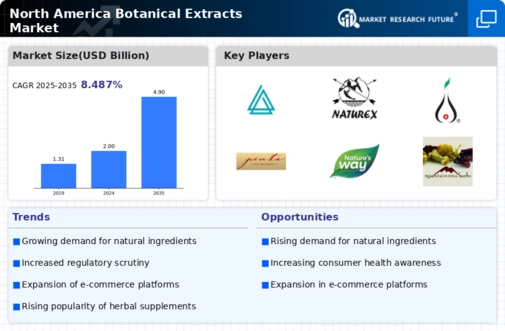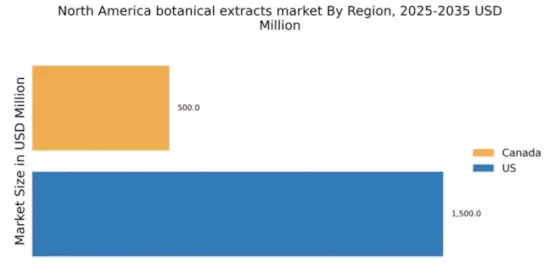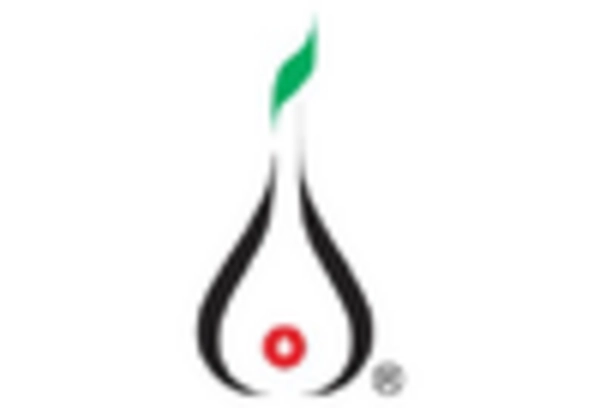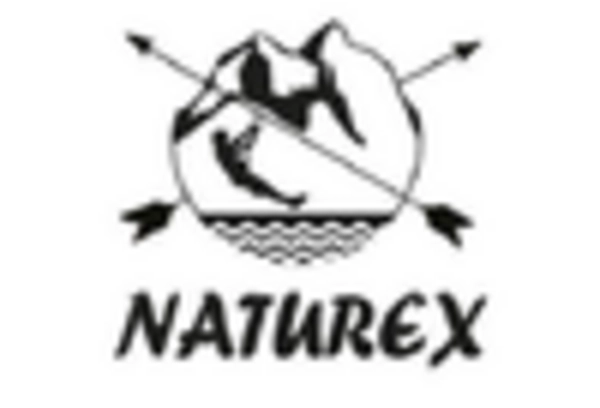Expansion of the Nutraceutical Sector
The botanical extracts market in North America is significantly impacted by the expansion of the nutraceutical sector. This industry, which encompasses dietary supplements and functional foods, is projected to reach a valuation of over $300 billion by 2025. The increasing incorporation of botanical extracts into nutraceutical products is largely attributed to their perceived health benefits, such as antioxidant properties and immune support. As consumers seek natural alternatives to synthetic supplements, the demand for botanical extracts is likely to surge. This trend not only bolsters the botanical extracts market but also encourages research and development efforts aimed at discovering new applications for these extracts in health and wellness products.
Rising Interest in Sustainable Sourcing
Sustainability has emerged as a critical driver for the botanical extracts market in North America. Consumers and businesses alike are increasingly prioritizing sustainable sourcing practices, which has led to a heightened demand for ethically sourced botanical extracts. This trend is reflected in the market, where companies that adopt sustainable practices often experience a competitive advantage. Approximately 60% of consumers are willing to pay a premium for products that are sustainably sourced, indicating a strong market potential. As a result, the botanical extracts market is likely to see a shift towards more sustainable extraction methods and sourcing strategies, aligning with consumer values and environmental considerations.
Consumer Preference for Clean Label Products
The botanical extracts market in North America is experiencing a notable shift as consumers increasingly favor clean label products. This trend is driven by a growing awareness of health and wellness, leading to a demand for transparency in ingredient sourcing. According to recent data, approximately 70% of consumers in North America express a preference for products with natural ingredients, which significantly influences purchasing decisions. As a result, manufacturers are compelled to reformulate their products to include botanical extracts, thereby enhancing their appeal. This consumer behavior not only drives sales but also encourages innovation within the botanical extracts market, as companies strive to meet the evolving expectations of health-conscious consumers.
Growth of the Personal Care and Cosmetics Sector
The botanical extracts market in North America is significantly influenced by the growth of the personal care and cosmetics sector. This industry is projected to reach a market size of over $100 billion by 2025, with botanical extracts playing a pivotal role in product formulations. Consumers are increasingly seeking natural and organic ingredients in their personal care products, which has led to a surge in the use of botanical extracts for their skin and hair benefits. This trend not only enhances the appeal of cosmetic products but also drives innovation within the botanical extracts market, as companies explore new formulations and extraction techniques to meet consumer demands.
Technological Advancements in Extraction Methods
Technological advancements in extraction methods are reshaping the botanical extracts market in North America. Innovations such as supercritical fluid extraction and ultrasonic extraction are enhancing the efficiency and quality of botanical extracts. These methods not only improve yield but also preserve the bioactive compounds present in the extracts, making them more effective for various applications. As the demand for high-quality botanical extracts continues to rise, companies are likely to invest in these advanced technologies. This trend indicates a potential for growth within the botanical extracts market, as businesses seek to differentiate their products through superior extraction techniques.


















Leave a Comment